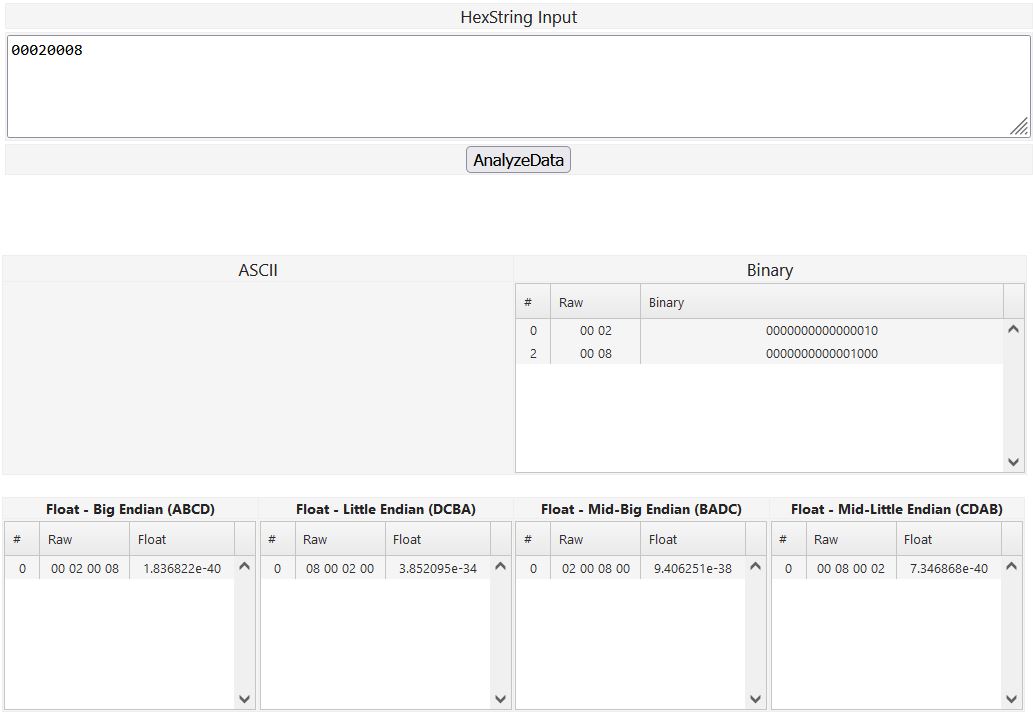OkiePC
Lifetime Supporting Member
Working with a CLX Cat # 20040 RS485 port Modbus RTU and I am not getting the expected data from for the sensor reading. I expected an IEEE754 float, but with the display showing 1.28ppm, I get a value of "2" from input register 30001, and "8" from 30002. Reading all 16 Input Registers no pair of them appear to be the right bit pattern for "1.28" as a 32 bit float.
Have any of you used the Modbus feature of that Chlorine analyzer? I have a Chloramine Analyzer right next to it that is working fine with Modbus RTU and I am low on analog inputs for that PLC so I thought I would do Modbus RTU and also collect all the other status info from it.
I tried to submit a tech support request online with Watts (who now owns HF) but their page is apparently broken because it will not let me submit.
if I can't figure it out I may have to add another input card and do it old school with 4 to 20mA and skip all the status information.
Have any of you used the Modbus feature of that Chlorine analyzer? I have a Chloramine Analyzer right next to it that is working fine with Modbus RTU and I am low on analog inputs for that PLC so I thought I would do Modbus RTU and also collect all the other status info from it.
I tried to submit a tech support request online with Watts (who now owns HF) but their page is apparently broken because it will not let me submit.
if I can't figure it out I may have to add another input card and do it old school with 4 to 20mA and skip all the status information.
Last edited:



